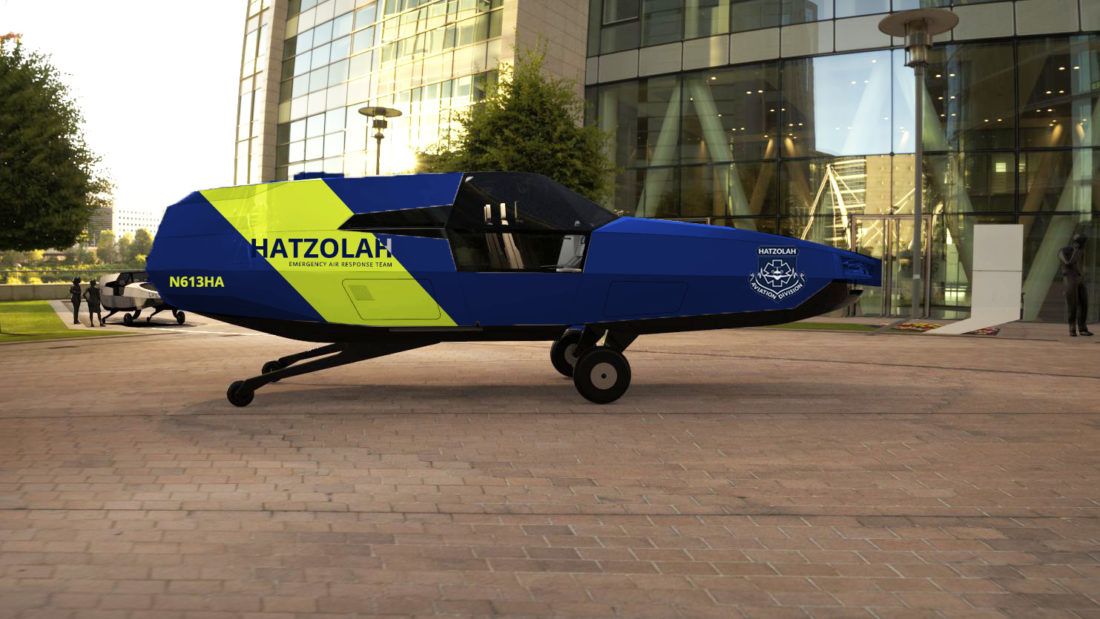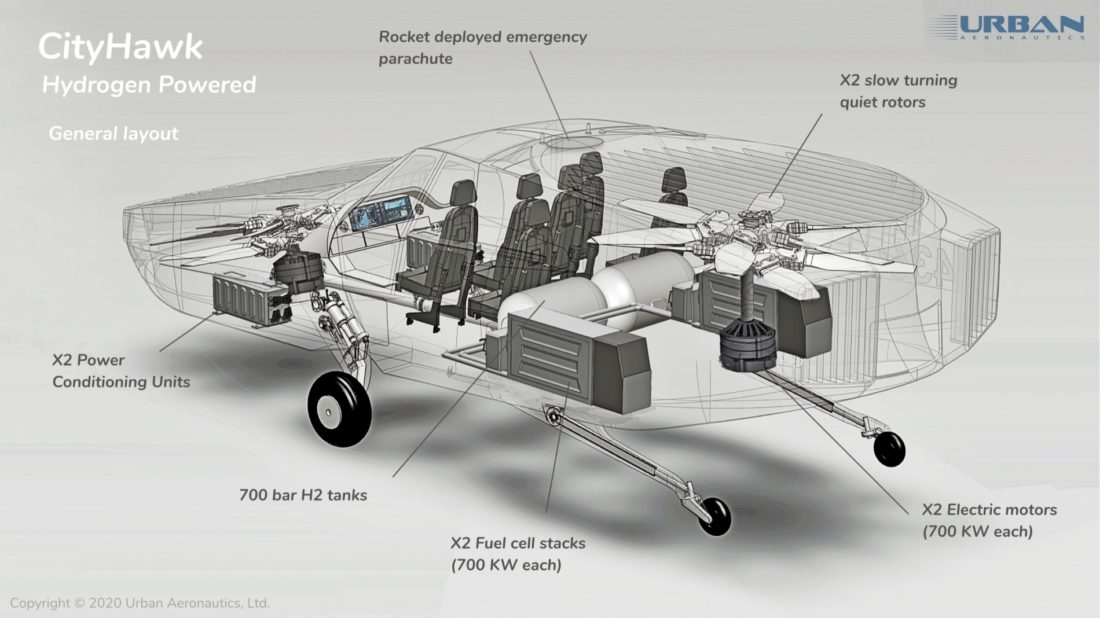Hatzolah EMS Service Could Land Flying Ambulances On City Streets


To avoid traffic, Hatzolah wants to take to the skies, or so it would seem.
Hatzolah Air, a newly formed air division of the volunteer emergency medical service (EMS) organization whose independent chapters serve mostly Orthodox Jewish communities in Brooklyn and around the world, announced last week that it pre-ordered four air ambulances from an Israeli aerospace company called Urban Aeronautics. Renderings from press releases announcing the purchase show a futuristic-looking vehicle landing on crowded city streets to assist at the site of an accident.
“Its compact size will enable it to land in the middle of a busy city street, making it a perfect fit for medical evacuation missions by dramatically decreasing the time it takes to arrive on-scene, treat and transport sick or injured patients to appropriate medical facilities,” Rafi Yoeli, CEO of Urban Aeronautics, said in an August press release.
The release describes the vehicle, called the CityHawk, as a “revolutionary” aircraft capable of vertical take-offs and landings with “a uniquely compact footprint and no external wings or rotors, resulting in an aircraft with unparalleled ‘fly anywhere, land anywhere’ access under almost any weather conditions.” The Cityhawk uses “powerful ducted fans in combination with innovative aerodynamic technologies that result in superior control, stability, speed, safety, noise reduction and sustainability.”
Most Hatzolah branches operate independently of each other, sharing only a common name. The Hatzolah Air entity (also called HatzolAir) that purchased the CityHawks is an independent 501(c)3 nonprofit launched in 2018. The entity has its headquarters in Kew Gardens, Queens, and lists its “fixed base operations” at Westchester County Airport in West Harrison.
Hatzolah Air currently operates a Lear 60 airplane which, in a 2019 profile by Mishpacha Magazine, founder Eli Rowe said was donated by an anonymous benefactor. According to a year-in-review video posted on Hatzolah Air’s Facebook page, the Lear jet has flown over 180,000 miles on 185 flights around the world.
But that airplane is a traditional aircraft designed to be operated on runways. The CityHawk is intended for use in dense urban areas.
Given their location, Hatzolah Air presumably intends to use the CityHawks in New York City. Urban Aeronautics did not respond to a request for comment, and Hatzolah Air declined to comment. A call to Chevra Hatzalah, the administrative organization that oversees the 16 branches operating in New York City, was redirected back to Hatzolah Air.

The Federal Aviation Administration (FAA) regulates New York’s airspace. In a statement, an agency spokesperson said simply that “FAA regulations allow helicopter operations to be conducted below the minimum altitudes set for fixed-wing aircraft due to their unique operating characteristics. A helicopter has the ability to execute pinpoint emergency landings and has the capacity to safely execute landings where a fixed-wing aircraft cannot.”
In the press releases, Urban Aeronautics said it had conducted over 300 successful flight tests of “an unmanned prototype for military use,” and planned to “complete development and FAA certification for EMS use and be ready for production within three to five years.”
The vehicle is also subject to oversight from the state’s Department of Health, which certifies all vehicles owned by EMS agencies that respond to emergencies, including first response vehicles, ambulances and aircraft. The Department did not directly address the Hatzolah purchase, but provided links to regulations governing medical aircraft and ambulance certification.

An additional document on the health department’s website titled “Guidelines for Helicopter Utilization Criteria for Scene Response” says that medical aircraft may be used when doing so would “speed a patient’s arrival to the hospital capable of providing definitive care and this is felt to be significant to the patient’s condition,” or if “specialized services offered by the air medical service would benefit the patient prior to arrival at the hospital.”
The Hatzolah pre-order is the CityHawk’s first official sale, and Urban Aeronautics’ said they would work with the EMS provider to “tailor the CityHawk flying ambulance to their operational requirements.” The aircraft will have room for a pilot, a patient and companion, two EMS workers, and a suite of onboard life support equipment.
Hatzolah and Urban Aeronautics also announced a partnership in which Hatzolah Air will become Urban Aeronautics’ “official sales representative and distribution channel to other EMS and Rescue organizations worldwide.”
“We are excited to become not just the worldwide distributor of Urban Aeronautics Air Ambulance CityHawk, but its first customer as well” said Eli Rowe, President of Hatzolah Air. “Hatzolah’s mission is always about patient care and adding the VTOL CityHawk has the potential to save many thousands of lives every year.”
No information was available about the CityHawk’s cost. According to their 990 form from 2018 (the most recent available), HatzolAir had about $96,000 in revenues and $67,300 in expenses that year.





